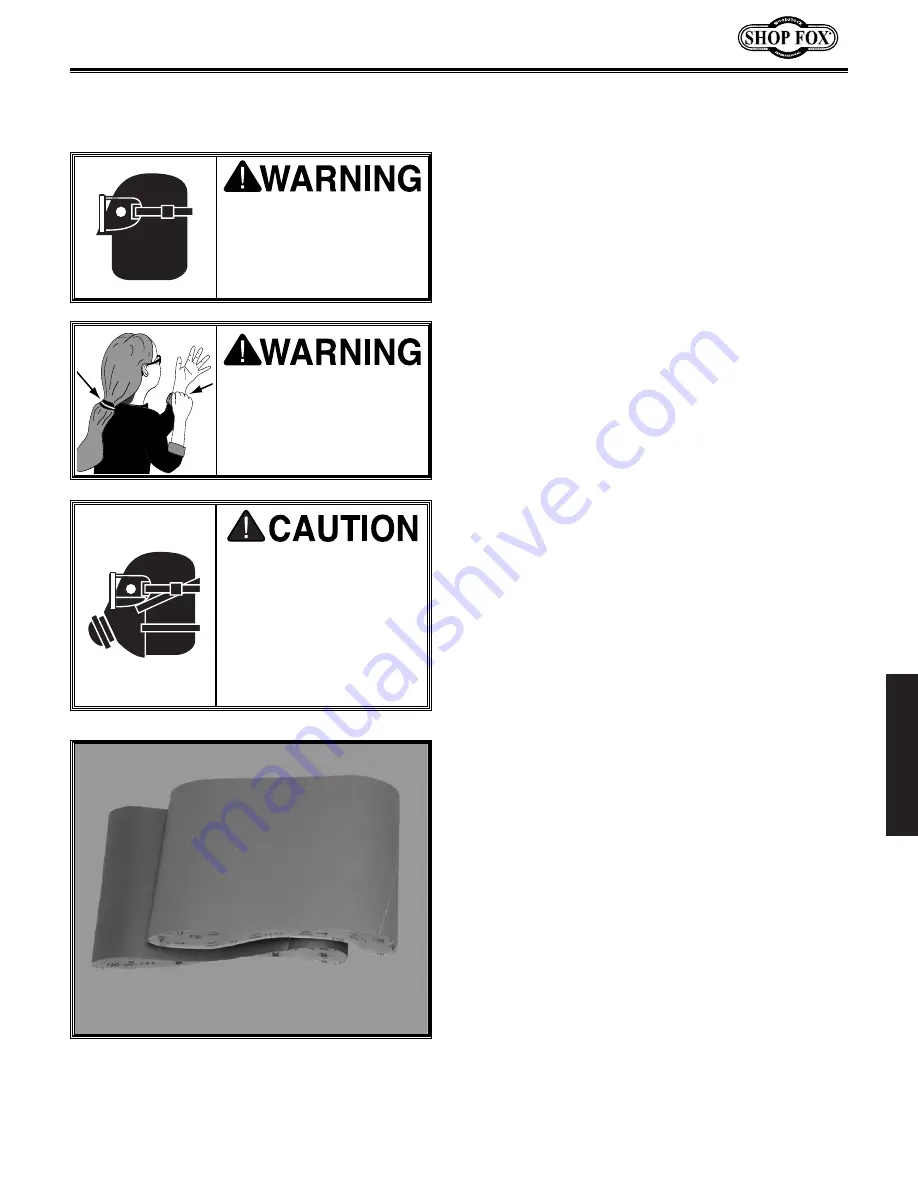
OPERATIONS
-23-
OPERATIONS
Test Run
Once assembly is complete, the machine is
ready for a test run. The purpose of a test run is
to identify any unusual noises and vibrations, as
well as to confirm that the machine is perform-
ing as intended.
Perform the test run as fol-
lows:
1.
Turn both the sanding and feeding belts
ON
.
2.
Once the machine is running, listen for any
unusual noises.
A slow, rhythmic air sound
is normal.
The machine should run smooth-
ly with little or no vibrations.
3.
If there are any unusual noises or vibrations,
shut the machine off immediately.
4.
Unplug the machine and investigate the
source of the noise or vibration. DO NOT
make any adjustments to the machine while
it is plugged in. The machine should not be
run any further until the problems are cor-
rected.
Always wear a dust mask
in addition to using a dust
collector. This machine
produces sawdust that
may cause allergic reac-
tions or respiratory prob-
lems.
Always wear safety glass-
es during operations.
Serious injury may occur
if this is warning is ig-
nored!
Always keep loose
clothing and long hair
secured and away from
moving parts.
Selecting Sandpaper
When selecting sandpaper, keep in mind that
the Model W1689 accepts only 16"W x 48"L belts
similar to those shown in
Figure 25
.
When deciding which grit of sandpaper to use,
consider the type of work, the species of wood
and the stage of finishing. Use these numbers as
a general guide to sandpaper type:
•
60 Grit....................................Coarse
•
80-100 Grit ..............................Medium
•
120-150 Grit ............................Fine
Experiment with each type of sandpaper on
scrap stock that is the same species as your
workpiece.
For best results, do not increase grit numbers
more than 50 on any successive pass.
Figure 25.
Sanding belts.
















































